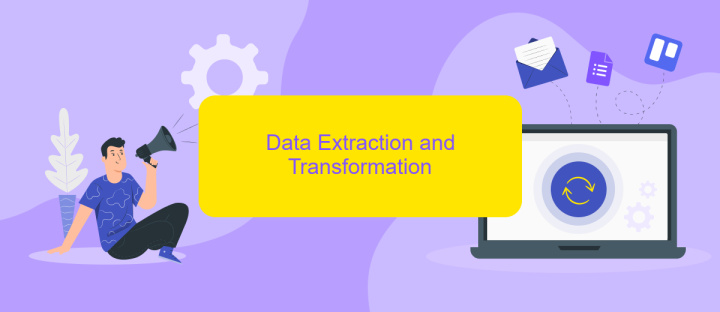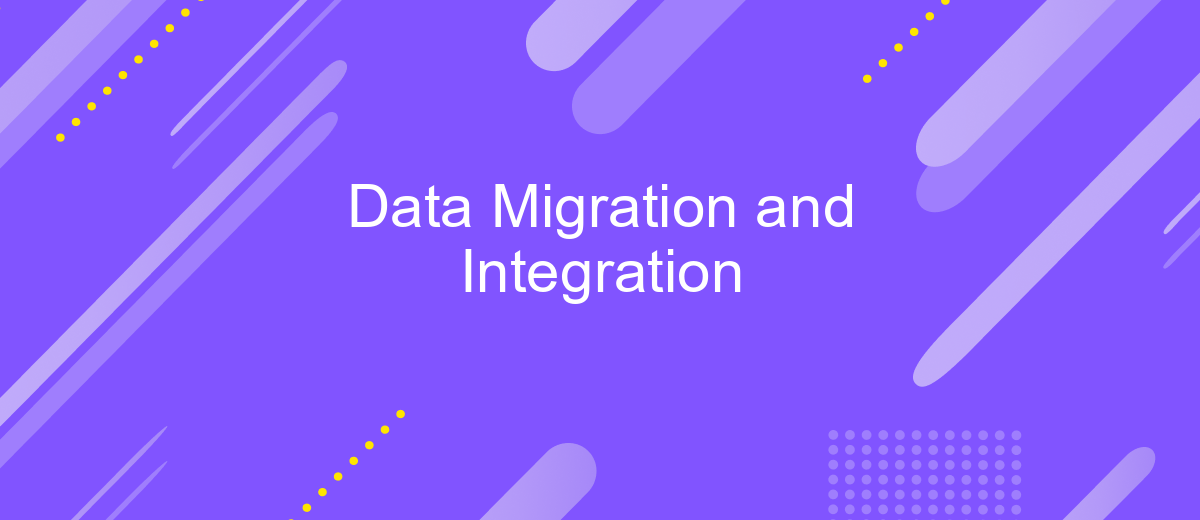Data Migration and Integration
Data migration and integration are critical processes in the modern digital landscape, enabling seamless transfer and consolidation of information across various systems. As organizations increasingly rely on diverse data sources, mastering these processes ensures data accuracy, consistency, and accessibility. This article explores the key strategies, challenges, and best practices for effective data migration and integration, helping businesses achieve optimal data management and operational efficiency.
Introduction
Data migration and integration are critical processes for organizations looking to optimize their operations and leverage new technologies. Efficient data migration ensures that information is accurately transferred from one system to another, while integration enables seamless communication between different software solutions.
- Data Migration: Transferring data from old systems to new ones.
- Data Integration: Combining data from different sources into a unified view.
- Tools and Services: Utilizing platforms like ApiX-Drive for streamlined integration.
ApiX-Drive is a powerful tool that simplifies the integration process by allowing users to connect various applications without extensive coding knowledge. This service ensures that data flows smoothly between systems, reducing the risk of errors and improving overall efficiency. By leveraging such tools, organizations can focus on strategic initiatives rather than being bogged down by technical challenges.
Data Migration

Data migration is a critical process for organizations looking to upgrade their systems, consolidate data, or transition to cloud-based solutions. It involves transferring data from one system to another while ensuring data integrity, security, and minimal downtime. The initial phase of data migration includes thorough planning and analysis to identify the data to be moved, the source and target systems, and the potential risks involved. Properly executed data migration can significantly enhance operational efficiency and provide a seamless user experience.
One of the key challenges in data migration is ensuring that the data remains consistent and accurate throughout the process. Utilizing specialized tools and services can greatly simplify this task. For instance, ApiX-Drive offers robust solutions for automating data transfers between various platforms, reducing manual intervention and the risk of errors. With its user-friendly interface and extensive integration capabilities, ApiX-Drive enables organizations to streamline their data migration efforts, ensuring a smooth and efficient transition. By leveraging such tools, businesses can focus on strategic initiatives while maintaining data integrity and operational continuity.
Data Extraction and Transformation

Data extraction and transformation are critical steps in the data migration and integration process. Extraction involves retrieving data from various source systems, while transformation ensures that the data fits the target system's format and requirements. These steps are essential for maintaining data integrity and consistency during the migration process.
- Identify data sources: Determine which databases, applications, and systems contain the necessary data.
- Extract data: Use tools or scripts to pull data from the identified sources.
- Transform data: Clean, format, and convert the extracted data to meet the target system's specifications.
- Load data: Import the transformed data into the target system.
Using automated tools like ApiX-Drive can streamline the extraction and transformation processes. ApiX-Drive offers a user-friendly interface and pre-built connectors for various systems, enabling seamless data integration. By leveraging such tools, organizations can reduce manual effort, minimize errors, and ensure a smooth transition of data from source to target systems.
Data Loading and Validation

Data loading is a critical phase in the data migration and integration process, where data is transferred from a source system to a target system. This process ensures that all necessary data is accurately and efficiently imported into the new environment. Proper data loading strategies minimize downtime and maintain data integrity.
Validation is equally important, as it ensures that the data loaded into the target system is accurate, complete, and consistent. This step involves checking for errors, duplications, and inconsistencies that may have occurred during the data transfer process. Effective validation helps in identifying and rectifying issues before they impact the overall system performance.
- Verify data completeness and accuracy
- Check for data consistency across systems
- Identify and resolve data duplications
- Ensure data integrity and compliance
Tools like ApiX-Drive can streamline the data loading and validation process by automating data transfers and providing real-time validation checks. This service helps in setting up seamless integrations between various systems, reducing manual effort and increasing efficiency. Utilizing such tools ensures a smoother transition and reliable data migration outcomes.


Data Integration
Data integration is a critical process that involves combining data from different sources to provide a unified view. This process is essential for organizations looking to leverage their data for better decision-making, operational efficiency, and strategic planning. Effective data integration ensures that data from various systems, such as databases, cloud services, and applications, can be accessed and analyzed seamlessly. This not only enhances data consistency and accuracy but also reduces redundancy and the risk of data silos.
There are several tools and services available to facilitate data integration. One such service is ApiX-Drive, which allows businesses to automate the integration of various applications and services without requiring extensive technical expertise. ApiX-Drive supports a wide range of platforms and can be configured to sync data in real-time, ensuring that all systems are up-to-date. By utilizing services like ApiX-Drive, organizations can streamline their data workflows, reduce manual intervention, and focus on deriving actionable insights from their integrated data.
FAQ
What is data migration and why is it important?
What are the common challenges in data migration?
How can I ensure data integrity during migration?
What is data integration and how does it differ from data migration?
How can I automate data integration processes?
Apix-Drive is a simple and efficient system connector that will help you automate routine tasks and optimize business processes. You can save time and money, direct these resources to more important purposes. Test ApiX-Drive and make sure that this tool will relieve your employees and after 5 minutes of settings your business will start working faster.

